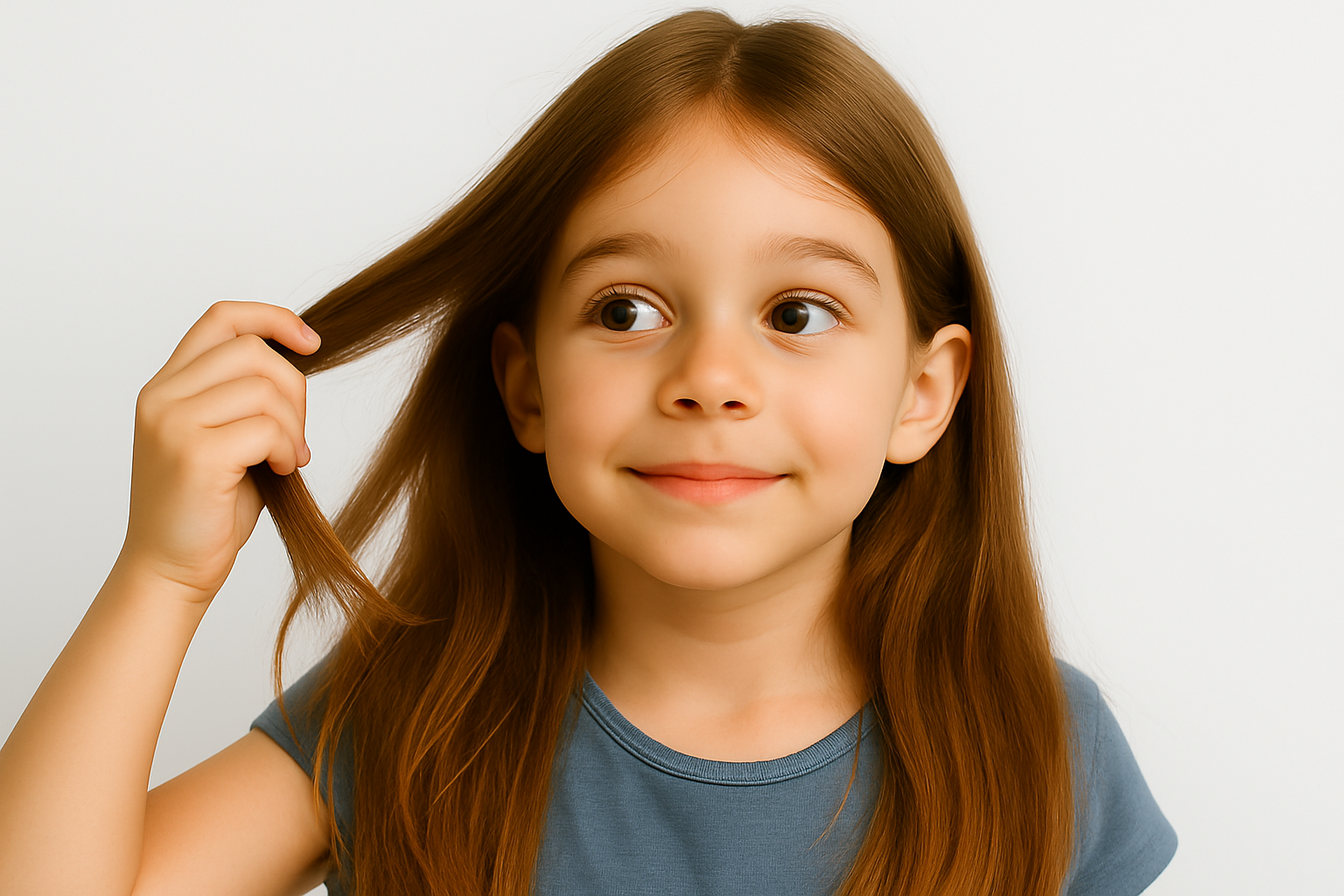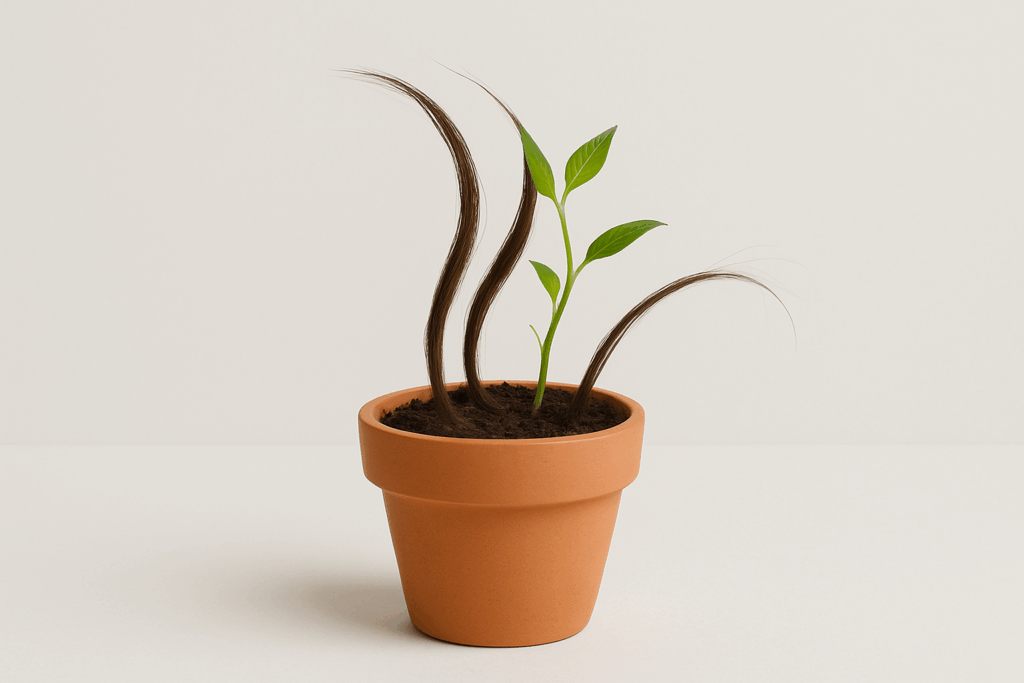Hair loss in children – reasons, diagnosis & valuable tips

Hair loss in childhood is often a worrying issue for parents. The causes can be varied - some harmless and temporary, others require specific medical clarification. Below you can find out about the possible causes of hair loss in children, how doctors make the diagnosis and what treatment options are available.
1. Causes of hair loss in children
Genetic predisposition
Although hereditary hair loss usually only occurs in adulthood, the first tendencies can already be seen in childhood. These are usually early signs of a genetic disposition that develops more strongly later on.
Infections and fungal diseases
One of the most common causes in childhood are fungal infections of the scalp (e.g. tinea capitis). They attack the hair roots and can leave bald patches.
Typical symptoms of a fungal disease
- Circular bald patches
- Scaly scalp
- Redness and itching
Note: Early treatment with antimycotics is crucial, as fungal infections can otherwise spread.
Nutrient deficiency
Children are in growth phases in which the need for vitamins and minerals is particularly high. A lack of iron, vitamin D, zinc or biotin can weaken the hair roots and lead to hair loss.
Frequent triggers
- Unbalanced diet
- Increased demand in growth phases
- Digestive disorders that inhibit the absorption of nutrients
Stress and psychological strain
Children can also suffer from stress - whether due to pressure at school, conflicts in their environment or family changes. The body often reacts to this with diffuse hair loss.
Stress-related signs
- Uniform hair loss over the entire head
- Mood swings
- Sleep problems
Traction alopecia
If hair is regularly and tightly tied into plaits or ponytails, this can put permanent strain on the hair roots. This so-called traction alopecia often leads to bald patches in the area of the hairline.
2. Diagnosis: How doctors find the cause
Medical history and examination
The doctor begins by interviewing the parents and child. Nutrition, illnesses, family history and the course of the hair loss are taken into account.
Important criteria for diagnosis
- Duration and severity of hair loss
- Condition of the scalp
- Life circumstances and possible burdens
Blood tests
Blood tests are carried out to rule out nutritional deficiencies or hormonal causes.
Swabs and fungal tests
If a fungal infection is suspected, a swab is taken from the scalp to determine the exact pathogen.
Psychological factors
In some cases, the doctor also includes psychological stress in the diagnosis, for example in the case of stress-related diffuse hair loss in children.
3. Treatment options
Medical therapies
- Fungal infections: Treatment with antimycotics (local or systemic)
- Nutrient deficiency: dietary changes or targeted nutritional supplements
Gentle hair care
Gentle care supports the health of the scalp and relieves the hair roots.
Tips for daily care
- Use mild shampoos without aggressive ingredients
- Use as few styling products as possible
- Do not blow-dry hair too hot
Patience and observation
Hair growth often recovers on its own once the cause has been identified and treated.

4. Prevention: What should I, as a parent, pay attention to?
Balanced diet:
Iron, zinc and vitamin D are particularly important for healthy hair.
Stress reduction:
A harmonious daily routine and sufficient sleep promote mental stability.
Gentle hairstyles:
Loose braids or loose hair avoid overloading the hair roots.
Regular visits to the doctor:
Early checks help to identify causes quickly and treat them in a targeted manner.
Conclusion: Promoting hair health from an early age
Even if hair loss in children may initially seem worrying, the causes can be easily treated in many cases. Whether infections, nutritional deficiencies or stress - the key is to recognize the triggers early on. With medical support, a balanced diet and gentle care, the hair roots can usually recover completely.
Using targeted active ingredients can be a sensible way to support healthy hair, regardless of age. The Laduti Hair Serum addresses this issue with a modern formula containing valuable ingredients:
- Procapil™: Strengthens hair anchoring and protects the follicles from the ageing process.
- AnaGain™ (pea sprout extract): Reactivates inactive hair follicles and prolongs the growth phase.
- Biotin: Promotes keratin formation and ensures strong hair structures.
- Caffeine: Stimulates blood circulation in the scalp and can activate the hair roots.
- Rosemary extract: Has an antioxidant effect, promotes regeneration and supports scalp balance.
How to supplement Laduti complements the natural basics such as nutrition and care with a high-quality combination of active ingredients that specifically strengthens your hair roots and scalp and can contribute to healthy, strong hair.

FAQ
What are the most common causes of hair loss in children?
In addition to nutritional deficiencies, infections, hormonal changes or childhood stress can also play a role. A medical examination provides certainty.
Can hair loss in children disappear by itself?
Yes, if it is triggered by stress or a temporary deficiency, for example.
What role does vitamin D play in hair loss in children?
A vitamin D deficiency can weaken the hair follicles. Blood tests quickly provide clarity here.
When should I take my child to the doctor?
If the hair loss lasts longer, bald patches appear or the scalp looks inflamed.
Does a special shampoo help with hair loss in children?
Shampoos can care for the scalp, but are rarely the sole solution.

